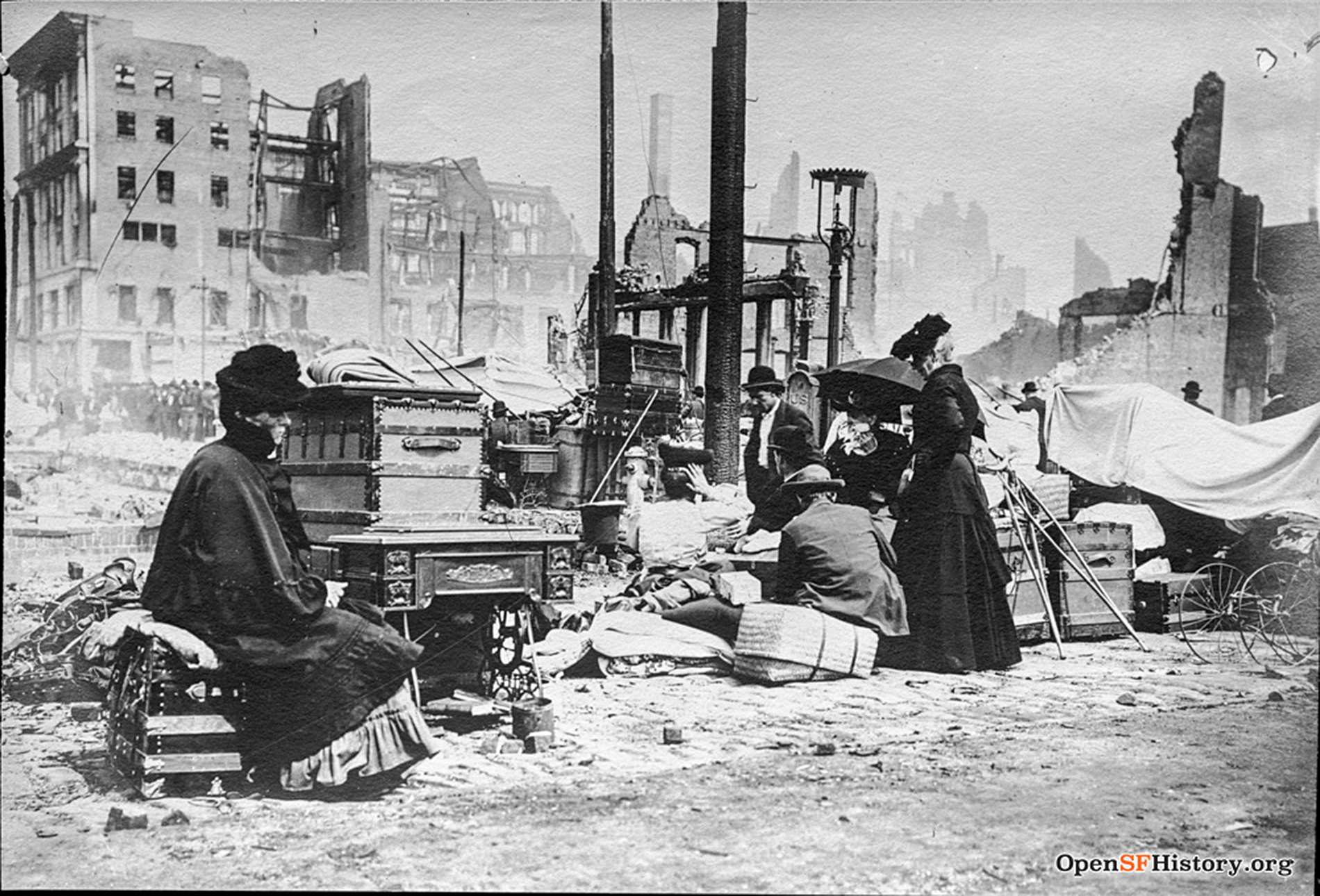It’s been seven years since the last survivor of the 1906 earthquake died. William Del Monte, who was 3 months old when his family left a burning city in a horse-drawn cart, died in early 2016, a few days before he would have turned 110.
When it came, a magnitude 7.8 earthquake at 5:11 a.m. on April 18, 1906, there would have been just a trace of dawn in the sky. Buildings warped and buckled, and entire neighborhoods built on marshlands—like Butchertown, in what’s now the Bayview—essentially collapsed. A shaken city started burning, and then those fires merged into a conflagration that, in only 74 hours, all but erased what was then the most populous U.S. city west of Chicago. In that brief window, looters vandalized and pillaged Chinatown. The official death toll of 3,000 is believed to be a gross underestimate.
San Francisco’s destruction is famous; the slow recovery less so. Chaos reigned, with rumors spreading that Seattle and Los Angeles were also leveled. Initially, homeless survivors lived in tents, but winter’s arrival made that untenable in the long-term. So the Army and the San Francisco Parks Commission mobilized California’s carpenters to construct thousands of temporary shelters.
“Relief shacks,” pulled on horse-drawn carts like the one that spirited the Del Monte family to safety, went up all over town, in Golden Gate Park, the Presidio and the undeveloped hills. They were painted a deep green, to blend into the parkland or perhaps to conceal the fact that tens of thousands of people were refugees in their own hometown. Most have been torn down, but a few survive in Bernal Heights and the Outer Sunset as residential growth absorbed them—some wholly intact, others modified almost beyond recognition.
This was not an easy time, full of misery and grandiosity. A proposal was floated for San Francisco to annex the entire Bay Area into a single massive city. But an outbreak of bubonic plague in 1907-08 surely taxed the struggling city’s public-health resources, while Mayor Eugene “Handsome Gene” Schmitz, who had ordered looters shot, was convicted of bribery and exortion. Still, within a decade, the 1915 Panama-Pacific International Exposition boasted to the world that San Francisco was back.
When the next Big One comes, it has the potential to be the most Instagrammed catastrophe in human history. Exquisitely beautiful buildings—your dream Victorian, maybe—will be red-tagged. While we’re still digging ourselves out, certain segments of the political spectrum will shower us with scorn, calling San Francisco a modern Gomorrah whose wickedness invited divine wrath.
Today’s homelessness crisis is a different beast, with different causes. We look at the inhabitants of tents and realize that one day, our house could be gone, and we, too, could be forced into a flimsy, temporary structure: drafty, impossible to keep clean and easily burglarized. We know the quake is coming and remind ourselves to swap out the gallon jugs of water in the storage unit and buy fresh batteries. The best way to prepare is to remember. The best way to remember is to prepare.
